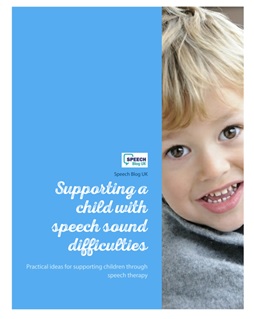So, you have just received a set of targets from your Speech Therapist. The chances are there are words on there you don’t use everyday, although hopefully the therapist has explained them! We often talk about semantics, concepts, irregular tenses etc and how to help your child understand and use them. Prepositions are another target we regularly set, so today I am going to talk through how I work on them in therapy.
Prepositions are a class of word that describe the position of an item. We tend to work through them in groups, so the first set a Speech Therapist is likely to target are ‘in, on and under’ as these are easier. However there are many harder prepositions including around, beneath, opposite, nearby – there is a long list! When teaching any new word, concept or idea you need to ensure that your child understands it before you can expect them to use it correctly. It may help to read our post on key words first.
Understanding prepositions – in/on/under
Start at a single word level. You will need a box with a lid and a toy that fits inside it – I often use a little teddy bear. Make sure the TV is off and reduce distracts as much as possible. It’s best not to introduce new work when your child is ill or tired – pick the best time for them! Also remember that 5-10 minutes good practise daily is much better than trying to do it for an hour once a week.
- You could explain to your child that you are going to play a hiding game.
- Sit facing your child with the box and toy in between you, so you can both reach them.
- Sit the toy on the box and say “Look, teddy’s on the box”, then make teddy hide again and put him under the box, again commenting “Look, teddy’s under the box” and finally hide teddy in the box. Again commenting “Teddy’s in the box!”. You can support this further using gesture or Makaton signs.
- Then explain that teddy wants to hide some more and needs their help. Hold teddy up and ask your child to hide teddy in one of the places. If your child follows the instruction correctly, praise them and comment again on teddy’s position (you can never repeat new words too much!). If they put teddy in the wrong place, comment “nearly, teddy’s on the box, he wanted to hide under”. Don’t worry if they get it wrong initially; they are learning something new. It’s important to sound positive and praise the effort not the outcome. You may need to repeat this activity a number of times on different days before you can move on. Always work at your child’s pace. If after a few trials, they are finding this hard you could make it easier by just using in and under.
- When they can do this easily, you can increase the instruction to a 2 word level. You will need another toy to do this. Then you have to get the correct toy e.g. teddy or dolly and also understand the preposition e.g. in/on/under. Put the 2 toys on the floor next to the box and try not to look at the one you ask the child to use. Some children are very good at picking up on eye pointing rather than using the words! This time give them instructions like “Put dolly in the box” or “Put teddy under the box” etc
- You can then progress to a 3 word level (If your child understands 3 key word instructions) by using another item that can have something in/ on and under it – for example a bag. So you have teddy, dolly, a box and a bag. Then give instructions like “Put dolly in the box” or “Put teddy under the box”. Remember not to look at the items as you say them!
Using prepositions – In/on/under
- Always check that your child understands before you get them to use new words e.g. go through the above section on comprehension first.
- Using the toy and box, again talk about hiding teddy. But this time, you hide teddy and ask the question “Where’s teddy?” If your child doesn’t respond give them options e.g. “Is he on the box?” If your child answers correctly, praise them and then hide teddy again. If they get it wrong, again be positive but tell them the correct answer.
- Once your child can consistently follow one key word instructions (meaning if you give them 5 instructions, they get them all correct without any signing or gesture to help them), you can let them play ‘teacher’ and tell you what to do. Most children love playing teacher and telling grownups what to do! They should be familiar with the instructions e.g. put teddy under the box etc. Follow the first few instructions correctly, but then get one wrong – what does your child do? Did they notice? By doing this you can check their understanding and use of what they have said. I normally say something like “Silly me, did I get it wrong? Do I need to try again?” Then correctly follow the instruction.
Generalising prepositions
- Now just because a child can follow a new concept in a structured activity doesn’t mean they will understand and use it in everyday life. It is however easy to use prepositions in normal activities to help with generalisation.
- Play a hiding game with your child – can they hide under the duvet or in the bath? Look for places to hide around the house where you can go in, on or under?
- When reading books, comment on where the characters are “Look, the girls in the car”
- When your child is playing, talk about where the toys are “The car’s going under the book” or “Dolly’s in the house”.
You can also work through different prepositions in a similar way. You may need to change some of the equipment, but start with real objects and progress through. Remember to use whatever captures your child’s imagination. If a teddy and box is boring, use Batman and his Bat cave or Else and her snow castle! Keep things fun.







Leave a Reply